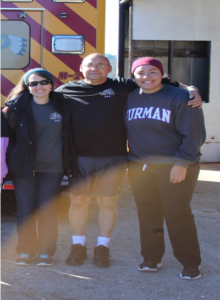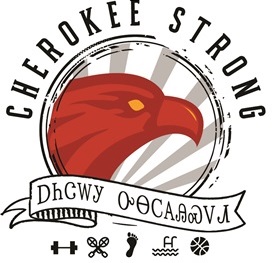Author: Angela Mucci —
The CDC reports that “Native Americans have higher rates of diabetes than any other racial group.” Furthermore, kidney disease stemming from diabetes is highest amongst Native Americans, with 2 out of 3 cases of kidney failure resulting from diabetes.
Diabetes among Native Americans was extremely rare until the mid 1900’s, likely due to the fact that their impressive agricultural skills and knowledge were a large part of their cultural traditions. In fact many European explorers and settlers were aided by the Native American grown bounty they found in the “New World.” Native American agricultural lifestyles and traditions changed as colonization was established and the Indigenous people were pushed out of their traditional homelands, contained on reservations and forced to discard their culture and traditions.
In response to high diabetes rates, some tribes have created programs aiming to lower diabetes statistics on tribal land. In 1999 the Eastern Band of Cherokee Indians, living in the Great Smoky Mountains of North Carolina, developed and implemented a community-based intervention called Cherokee Choices. Their goal: to promote physical, mental, spiritual, emotional and cultural well-being in order to prevent chronic diseases such as diabetes.
MountainWise reached out to Cherokee Choices in Fall of 2016 to offer collaboration and funding for a Diabetes Prevention Program on the Qualla Boundary. Minority Diabetes Prevention Coordinator, William Pertet said of the partnership: “We provide the CDC curriculum and also encourage each minority group to blend it with their own culture in order to make it theirs.”
Keeping Traditions Alive
Nutritionist and Fitness Coordinator April Innis is a lifestyle coach for the resulting program called Cherokee Strong, which offers classes and support for Cherokee residents who are at risk of developing Type 2 diabetes or prediabetes. She noted that “It is important to incorporate the Cherokee culture in everything we do here at Cherokee Choice. Food is a big part of the culture for many people here. A lot of the Native foods are inherently healthy, especially if they are prepared with nutritional value in mind.” The Cherokee Strong program incorporates Cherokee recipes into the program cookbook. “One recipe we share, which utilizes native ingredients, is our sweet potato and ramp recipe:”
Ramps & Sweet Potatoes – Prep time: 10 minutes
Cook time: 30 minutes Serves: 4

Ingredients:
- 4 medium potatoes, unpeeled, thinly sliced
- Cooking spray
- 1 to 2 cups ramps, raw, cleaned
- 1 ½ cups water
- 1 tbsp olive oil
- ½ tsp salt or salt substitute
- 1/8 tsp ground pepper
Preparation:
- Coat a nonstick skillet with cooking spray and olive oil. Spread sliced potatoes on skillet and cook over medium heat for 15-20 minutes, or until potatoes are tender. Stir every few minutes.
Add ramps and continue cooking for 5 minutes, gently stirring. Do not over-stir, or potatoes will break. Sprinkle ramps and potatoes evenly with salt and pepper.
According to the American Indian Health and Diet Project, an organization dedicated to recovering the health of indigenous people, ramps were “one of the first greens to appear in spring….[and] were considered an important ‘tonic’ by providing vitamins and minerals that had not been available during the winter….Cherokee tribe used ramps to treat colds and earaches”.
Enrolled member of the Eastern Band of Cherokee Indians and class participant Bill Paul recalled: “We ate some good meals and I asked April for those recipes after class”. Bill first heard about Cherokee Strong from a friend after his doctor told him in the Fall of 2018 that he was pre-diabetic at age 56. Bill added that diabetes was a big part of life on the Qualla Boundary, saying: “I have known a lot of people who have it and it runs in my family and I do not want diabetes. Normally I would be snoozing after work, haha, but I was motivated to go because I do not want to get diabetes.”
Bill used to “eat like a horse” while in the military, where he served for “24 years, six months and 8 days.” His high physical activity level made it easy to burn off calories while enlisted, but when he retired and switched to a desk-job he started gaining weight. “I had to relearn how to eat and make some other adjustments.” At the Cherokee Strong classes he learned how to make healthy lifestyle changes with regard to nutrition, physical activity, goal setting and stress management.
“Awareness was the Biggest Thing”
“Knowledge is power,” Bill said. For him the thing that made the most difference was as simple as paying attention to what he was eating: “I used to go to grocery stores and get what appealed to me at first glance but now I look at things like serving size and calories. I read ingredients and notice if foods are loaded with bad stuff like trans fat and other things I just had no clue about “Now I look at things like sodium, calories. I choose Triscuits instead of the breakfast bars with bad stuff, I even take pictures of labels and show them to the teachers! I used to eat anything under the sun.

Movement is Medicine
In the group Bill learned about the helpfulness of exercise and soon after joining he participated in a local annual Thanksgiving 5 k turkey strut with other participants. “I did not do as good as I thought I would,” said Bill. “In the military I had a good running time. I thought it was going to be easy like it was then, but a lot has changed, Bill said with a laugh.” He also started resistance walking and reports: “I have more energy and feel less tired when going to work; I used to be really tired all the time and it worried me.”
Small Changes, Slow but Certain Results
Bill has seen encouraging results and is beginning to lose weight.” April stated “Bill has made a lot of progress over the past year. I would say his biggest strength is his enthusiasm and willingness to learn and grow.” She encourages anyone thinking of participating to: “Be open to change- not drastic changes all at once or giving up all of your favorite foods but just making small gradual changes that lead to lifelong wellness.” Bill agreed saying, “the change has been slow but certain. I am enjoying the maintenance phase of the program where “we continue to meet and check in with each other. I even brought my manager to the program too. “Diabetes has taken our mothers, fathers, brothers and sisters. With the Cherokee Choices and Cherokee Strong programs we now have a tool to make better choices so we can be with our loved ones a lot longer.”
Cherokee Strong classes are held at Ginger Lynn Welch Complex and at Snowbird Rec Complex. Anyone who is at risk of developing Type 2 diabetes or pre-diabetes is welcome to attend. Contact Cherokee Choices Program Director Robin Callahan RD, LDN, MHS, CDE at 828-359-6782 for information on program schedules.

